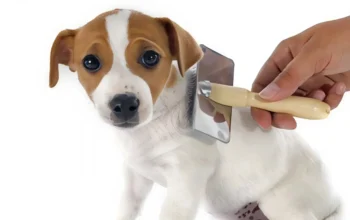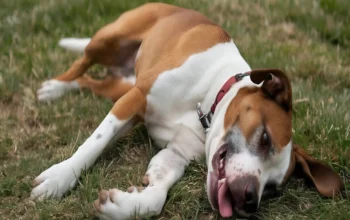Pena Global – Ever noticed your dog acting super nervous in places they used to love? Or maybe they shake for no reason, avoid people, or bark like crazy at nothing? If that sounds familiar, you might be dealing with dog trauma recovery.
It can be confusing and heartbreaking, especially when all you want is to see your pup happy and tail-wagging again. But don’t worry, trauma is more common in dogs than most people think, and there are ways to help them heal. You just need a little patience, a calm approach, and the right steps to rebuild trust.
Let’s dive in and understand how to spot the signs, and more importantly, how to support your furry friend through recovery.
Table of Contents:
Understanding the Signs of Trauma in Dogs
Dogs don’t speak our language, but their behavior says a lot. Traumatized dogs often show very specific signs that, when understood properly, can help you identify their emotional wounds.
Here’s what to watch out for:
- Hesitating or refusing to enter certain places
- Barking excessively without a clear reason
- Urinating out of fear, especially when approached by strangers
- Shaking or trembling even when it’s not cold
- Avoiding eye contact or hiding from people
- Becoming overly alert, as if always “on edge”
- Pulling their ears back or tucking their tail between their legs
- Lowering their body close to the ground
- Rapid breathing or panting without exertion
- Sudden aggression when feeling cornered
These signs are often misunderstood as bad behavior, but in reality, they can be symptoms of past trauma. Whether it’s abuse, neglect, loud environments, or simply a scary experience, it leaves a mark on a dog’s emotional state.
1. Create a Safe Space
One of the first things you can do is give your dog a personal space where they feel totally secure.
It can be a cozy corner of your home, a soft crate, or a quiet room filled with their favorite blanket, bed, or mat. The key is to make it free of loud noises or surprises. When your dog knows they have a safe retreat, they’ll begin to relax.
Let them rest there, and avoid disrupting them during their quiet time.
2. Stick to a Daily Routine
Dogs thrive on structure. When they know what to expect throughout the day, their anxiety naturally goes down.
Set up a consistent daily schedule that includes:
- Morning walks
- Feeding times
- Playtime or cuddle sessions
- Evening wind-down rituals
Repetition builds confidence and predictability, which are crucial for trauma recovery.
3. Let Them Choose
Sometimes, healing means giving up a bit of control. Instead of forcing your dog into situations, let them take the lead, literally and figuratively.
For example:
- Let them decide the direction during walks
- Avoid pushing them into crowded or loud areas
- Don’t force them into a car if that’s a trigger
The more choices they’re allowed to make, the more they feel in control, and that reduces stress big time.
4. Stay Calm and Reassuring
Your dog picks up on your energy. If you’re nervous, stressed, or upset, they’ll feel it too.
Try to stay calm in your tone and body language. Use a soft voice. Move slowly. Offer gentle reassurance with your presence, and let them come to you when they’re ready.
If they start showing signs of fear, don’t punish them. Instead, reassure them quietly and give them space.
5. Reintroduce Triggers Slowly
Think about this from a human perspective. If something traumatic happened to you, would you want to face it again immediately? Of course not, and neither does your dog.
If your dog is afraid of a specific object or place, reintroduce it in small doses:
- Start by placing the object nearby for just a few minutes each day
- Gradually increase the exposure time
- Pair the object or place with treats and positive reinforcement
If it’s an activity (like riding in the car), begin by just letting them sit in the car without turning it on. Day by day, build up tolerance, always respecting their comfort zone.
6. Encourage Positive Distractions
Fun activities can shift your dog’s focus from fear to joy. Create new memories through:
- Short walks in calm environments
- Interactive games like fetch or tug
- Puzzle toys to engage their brain
- Exploring new smells in a quiet park
These small moments can build trust and confidence.
7. Don’t Be Afraid to Get Professional Help
If your dog’s trauma symptoms don’t improve, or seem to get worse, it might be time to bring in a pro. A certified dog behaviorist or a vet can offer deeper insights.
Some vets might suggest behavior therapy or, in extreme cases, mild anxiety medications as temporary support. But always combine that with gentle training and love.
Final Thoughts
Helping a traumatized dog recover isn’t a quick fix. It’s a journey built on trust, patience, and love. But every step forward, no matter how small, is a huge win for your pup.
And trust us, when they start wagging their tail again, looking at you with those big, trusting eyes, it’s one of the best feelings in the world.
What do you think? Let’s get started today. Your dog’s recovery starts with you.






